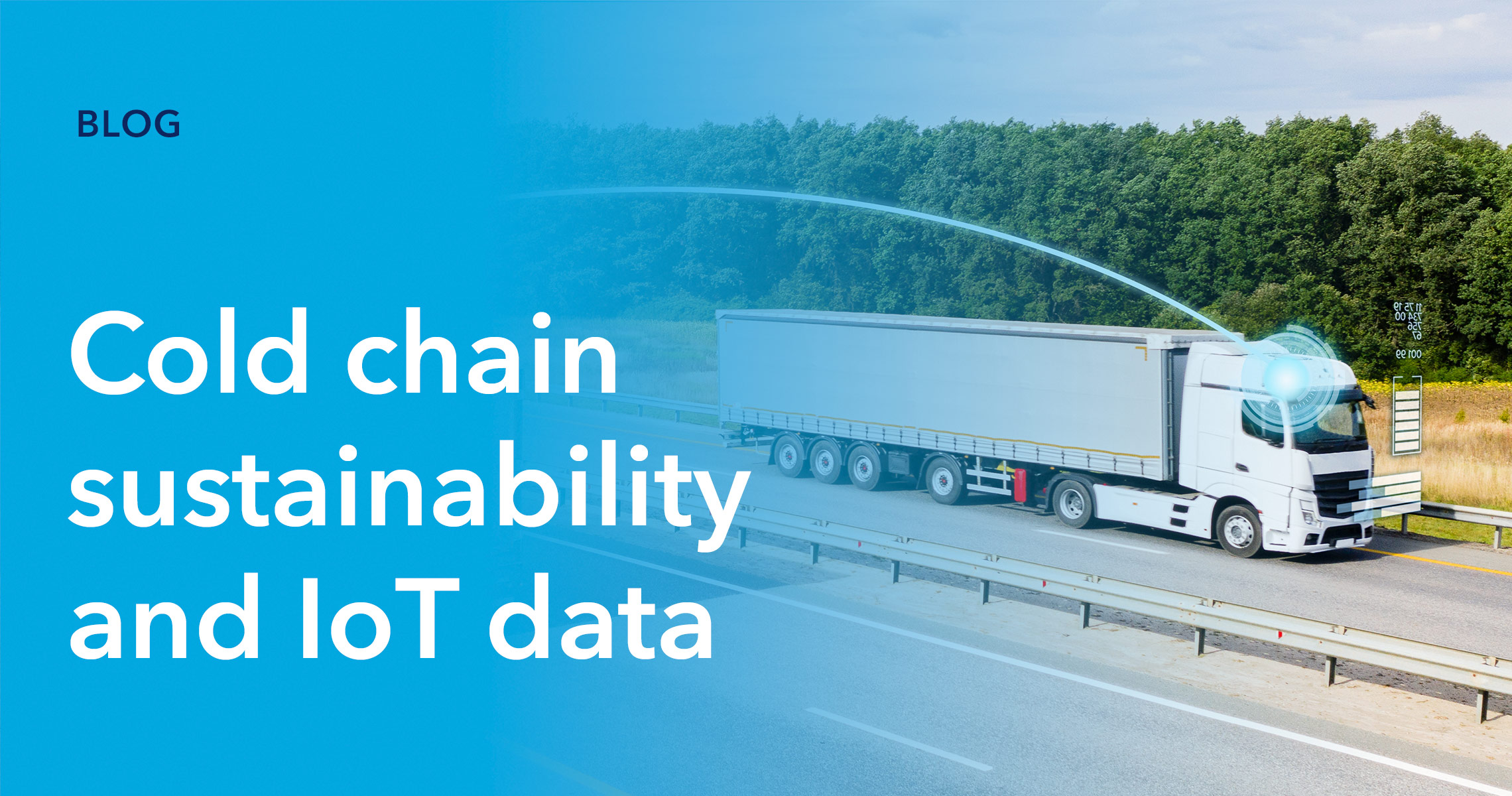How can data, specifically IoT device data, contribute to cold chain sustainability? As governments ramp up sustainability efforts to meet the 2030 deadline for the United Nations Sustainable Development Agenda, the pressure is increasing for companies to actually start acting on their environmental, social, and governance (ESG) initiatives. Unsurprisingly, the retail supply chain has come under particular scrutiny. Breakdowns in supply chain infrastructure and efficiency are among the main contributors to food waste and greenhouse gas emissions. This is especially true of the “cold chain,” or temperature-controlled supply chain. Cold transport consumes 20 percent more fuel than other heavy vehicle types due to refrigeration equipment.
The global cold chain environment
The global cold chain is a multi-stakeholder environment, with participants in numerous industries including manufacturing, transportation and logistics, and storage. Along each step of the cold chain, thousands of IoT devices share information about issues such as maintenance, product integrity, and more. All of this information can be used to improve cold chain sustainability, by streamlining operations, implementing efficient technology, or reducing resource usage. Ultimately, this can lead to innovation-by-design, so that subsequent products are built with their environmental footprint in mind.
Specifically in transportation, there are many wireless sensors inside the temperature-controlled “reefer” trucks used to transport cold chain goods such as vaccines. These IoT devices take temperature readings at various polling intervals, depending on the nature of what is being shipped and its sensitivity to temperature fluctuations. To avoid any one device heating up its own temperature sensor, the containers typically have distributed sensors all communicating to a hub. The hub will then upload data on the thermal environment of the container to the cloud, via a cellular or even satellite connection.
The need for trusted data
In our previous post, we discussed some of the challenges of managing cold chain IoT data security. Unfortunately, along every step of the cold chain, there are opportunities for data to be lost or corrupted. And there are numerous companies that need to share some (but not all) of the sensitive sensor data. For the continued safety and stability of their products, cold chain stakeholders must ensure that their connected devices, and the data they gather and transmit, are legitimate and secure. Having a secure data-processing solution that includes trusted data interoperability as part of an overall IoT data management roadmap is therefore mission-critical.
Regulatory compliance is also a key factor. There are a wide range of general and industry-specific regulations, standards, and guidelines for the cold chain. Companies must maintain strict adherence to these regulations and provide robust audit reporting. This is where data governance comes in. Knowing who has access to data, what they can do with it, and how to change levels of access and responsibility is the foundation of data governance. A data governance plan gives an organization a framework for realizing the positive gains from its data function while also enhancing its risk management.
How does this connect to cold chain sustainability? Well, with trusted IoT device authenticity and strict governance over data throughout its lifecycle, businesses can take full advantage of full operational visibility. They can analyze the data to discover opportunities for innovation or process improvement, waste reduction, resource upcycling, and other strategies to become more sustainable.
A data-driven supply chain
As organizations invest more in technological innovation, the benefits of focusing on corporate sustainability are numerous. And while reducing greenhouse gas emission along the supply chain is good for the environment, it’s also good for the bottom line. Over the last several years, various companies have saved billions of dollars in costs by focusing on sustainability. This trend is expected to continue, especially as more of the supply chain becomes increasingly data-driven.
IoT data has the potential to vastly improve global cold chain sustainability, whether in the food or pharmaceutical space. Transportation management, operations logistics, and manufacturing all benefit from full visibility into IoT data. Within the cold chain, tracking the location, storage conditions, and travel speed of perishable goods can help stakeholders identify potential efficiency gains and cost savings, prevent critical failures, and meet compliance regulations. In other words, trusted IoT data is key to driving sustainability efforts.
Intertrust offers full-cycle, trusted IoT data management solutions, from IoT device provisioning, to time-stamped data capture and storage. Within its trusted data management ecosystem, Intertrust ensures the security and authenticity of connected IoT devices, enables organizations to maintain strict data governance, and facilitates secure data collaboration. To find out more about how Intertrust addresses the unique data and business challenges among participants in the IoT retail supply chain, including cold chain sustainability, you can read more here or talk to our team.
About Julian Durand
Julian Durand is VP of Intertrust Secure Systems and product owner of Intertrust PKI (iPKI). He earned his engineering degree from Carleton University, and his MBA from the University of Southern California (USC). He is also a Certified Information Systems Security Professional (CISSP) and inventor with 10 issued patents.



